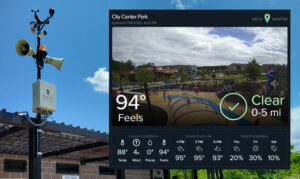The idea of relaxing aspects of the Fayetteville sign ordinance and extending drinking hours at local watering holes were topics during the campaign season in late 2011 and at the recent planning retreat for the Fayetteville City Council.
Though no vote was taken at the annual retreat held March 9, the consensus among the council was to proceed with a discussion that could lead to an increase in the amount of square footage available for signage on city businesses.
City staff proposed the idea of using separate calculations for wall signs and ground signs. The two types of signs are currently calculated together. Those calculations include up to 35 square feet for a ground sign with wall signs permitted for 5 percent of the facade square footage, though the current requirement also subtracts the ground sign allowance from the facade calculation.
Referencing the current ordinance, City Manager Joe Morton by way of example noted that a building with a facade measurement of 100 linear feet by 20 feet in height would total 2,000 square feet. Five percent of the facade square footage would total 100 square feet that would be allowed for the entire site. That number would also require subtracting the 35 square feet allowed for the ground sign, leaving a total of 65 square feet for both wall and ground signage.
The current calculations might work well for larger buildings with more facade space but not so well for smaller buildings, Morton said.
The ground sign proposal submitted to the council for consideration would allow one 35 square-foot sign for each public street frontage while the provision for stores in planned shopping centers would be allowed 45 square feet per sign.
And calculated separately, wall signs on lots with a single building would be permitted a maximum of two signs, one per wall. The calculation would be based on 1.5 square feet per linear foot of building frontage with a maximum of 150 square feet per building.
There are two proposed variations for tenants in planned shopping centers though both would be permitted a maximum of 150 square feet of wall signage.
The basis for the proposed changes hit on three issues. Those included addressing specific variance trends that have been occurring over the past few years, reducing confusing language that can be cumbersome to apply and benefitting from the work on sign ordinance revisions adopted by other jurisdictions with similar standards.
Morton said the current methodology of calculating signage is indeed cumbersome and has been the biggest variance issue experienced by the city in the past few years. He said the proposal being submitted follows a similar methodology to the one being used in other cities such as Peachtree City.
The council is expected to take up the signage issue in the coming weeks or months.
Another issue that surfaced at the retreat dealt with possible changes to the hours that alcohol can be sold by the glass and the ratio of food sales to alcohol sales at restaurants. The request to review both items came earlier this year from Larry Graves, owner of The Olde Courthouse Tavern in downtown Fayetteville.
City staff recommended that the council consider allowing the hours of operation to be extended to 1 a.m. each day of the week rather than the five weekdays currently allowed. Restaurants currently close at midnight on weekend nights. It was noted that businesses serving alcohol by the glass in Peachtree City currently stay open until 2 a.m. seven days a week and until 3 a.m. each night in Senoia.
Another proposal recommended the percentage of food sales to alcohol sales be reduced from the current percentage of 75/25 to 60 percent food and 40 percent alcohol.
This issue is also expected to be taken up by the council in the near future.












Leave a Comment
You must be logged in to post a comment.